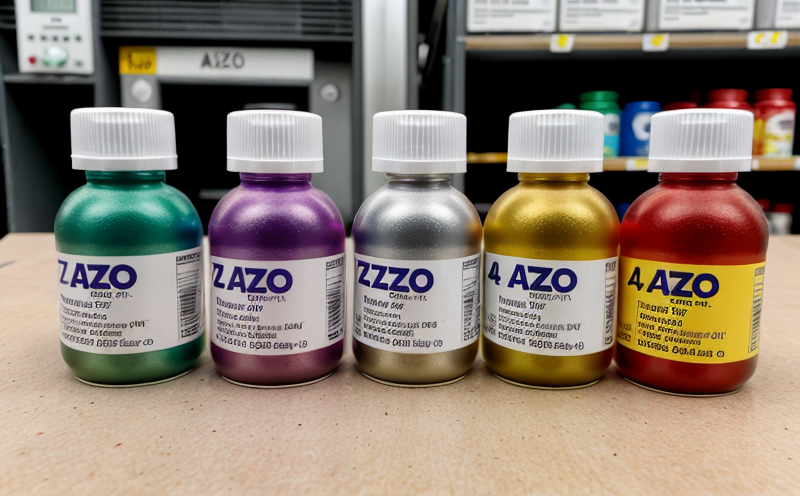ASTM D5213 Organotin compound detection in coated textiles
The ASTM D5213 standard provides a method to determine the presence and concentration of organotin compounds, specifically tributyltin (TBT) and triphenyltin (TPT), in textile coatings. This test is crucial for ensuring compliance with international regulations aimed at reducing environmental pollution from these harmful substances.
Organotin compounds are widely used as biocides in various industries, including the production of textiles. However, their release into aquatic environments through wastewater can lead to significant ecological damage. Consequently, many regions have implemented stringent regulations to limit or eliminate organotin usage in textile coatings.
The ASTM D5213 method is based on liquid chromatography with mass spectrometry (LC-MS/MS) analysis. This analytical technique allows for highly sensitive and specific detection of organotins, even at trace levels. The test involves extracting the coating from the textile specimen using a suitable solvent, followed by the separation and quantification of organotin compounds.
Specimen preparation is critical in this testing process. Textile samples must be selected to represent the coated areas that come into contact with water or other liquid environments. Once extracted, the solution undergoes filtration and dilution if necessary before being analyzed by LC-MS/MS. The method typically targets organotin compounds at concentrations as low as 0.1 μg/g.
The accuracy of ASTM D5213 depends on several factors, including the quality of the extraction process, matrix effects in the solution, and the precision of the LC-MS/MS instrumentation. Therefore, laboratories specializing in this service must ensure they use validated methods and calibrated equipment to achieve reliable results.
Compliance with ASTM D5213 is essential for industries that produce or import textiles intended for use in water-based applications, such as boat upholstery, swimwear, and certain types of outdoor gear. Non-compliance can result in product recalls, legal penalties, and damage to brand reputation.
In summary, the ASTM D5213 method is a critical tool for ensuring environmental protection and regulatory compliance. By accurately detecting organotin compounds in textile coatings, laboratories like ours contribute significantly to safeguarding aquatic ecosystems from potential harm caused by these persistent pollutants.
Why It Matters
The detection of organotin compounds as specified by ASTM D5213 is not only a compliance requirement but also an essential step in environmental stewardship. These compounds, particularly tributyltin (TBT) and triphenyltin (TPT), are known for their toxicity to marine life. Even at low concentrations, they can cause reproductive failures and developmental abnormalities in fish and other aquatic organisms.
Given the widespread use of organotins as biocides in textile coatings, it is imperative that manufacturers and importers ensure minimal or no release of these compounds into water systems. This responsibility extends to various industries, including boating, marine textiles, and outdoor apparel. By adhering to ASTM D5213, companies can demonstrate their commitment to sustainable practices and avoid the negative environmental impacts associated with organotin contamination.
The international community recognizes the importance of reducing or eliminating organotins in textile coatings. Regulatory bodies like the European Union (EU) have implemented directives such as REACH that mandate stringent controls on the use, manufacture, import, and sale of products containing harmful substances. Similarly, countries around the world are aligning their standards with these global efforts to protect public health and the environment.
In conclusion, the detection of organotin compounds through ASTM D5213 is a vital component of responsible manufacturing processes. It enables companies to meet regulatory requirements while also contributing positively to environmental conservation by minimizing the release of hazardous chemicals into aquatic ecosystems.
Quality and Reliability Assurance
The quality and reliability assurance for ASTM D5213 testing are paramount in maintaining the integrity of results. Our laboratory employs rigorous procedures to ensure accuracy, precision, and consistency in every test conducted. These measures include:
- Use of certified reference materials (CRMs) for method validation.
- Regular calibration of all analytical instruments using traceable standards.
- Participation in inter-laboratory proficiency testing programs to benchmark performance against other leading laboratories.
- Diligent monitoring and updating of test protocols based on the latest international guidelines and recommendations.
- Training of personnel according to ISO/IEC 17025 standards for quality management systems in testing and calibration laboratories.
We also maintain an extensive database of test results, which allows us to track trends over time and identify any inconsistencies or anomalies. This proactive approach ensures that our clients receive reliable data they can trust when making informed decisions about their products.
International Acceptance and Recognition
The ASTM D5213 standard is widely recognized and accepted internationally for its robust methodology in detecting organotin compounds. This global recognition underscores the importance of adhering to this testing protocol, especially when dealing with international trade or compliance requirements.
Many countries have incorporated ASTM standards into their national regulations due to their stringent quality control measures and scientific rigor. For instance, the EU has adopted ASTM D5213 in its REACH regulation, which governs chemicals placed on the European market. Similarly, Canada, Australia, New Zealand, and other nations have referenced this standard as part of their environmental policies.
The use of ASTM D5213 not only ensures compliance with international standards but also facilitates smoother trade between countries by aligning testing methods across borders. This harmonization reduces barriers to entry for manufacturers exporting textiles coated with organotins, thereby promoting global market access.
In addition to regulatory acceptance, the adoption of ASTM D5213 by leading industry organizations further reinforces its significance. Professional associations and trade bodies frequently recommend or require compliance with this standard as part of their certification processes. This broad-based support enhances confidence in the results produced through ASTM D5213 testing.
To summarize, the international acceptance and recognition of ASTM D5213 underscore its role as a cornerstone for ensuring environmental responsibility and regulatory adherence across various sectors.





